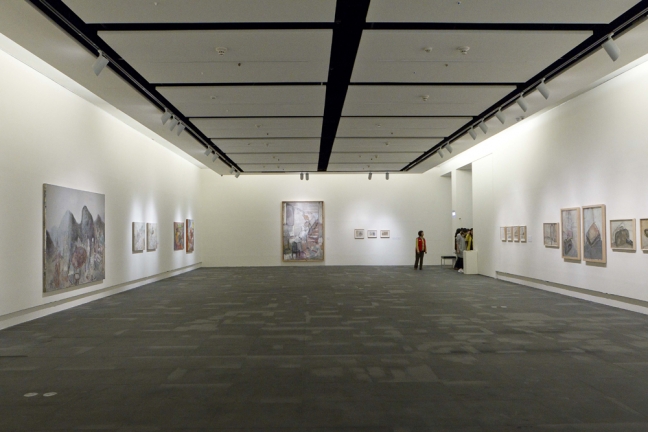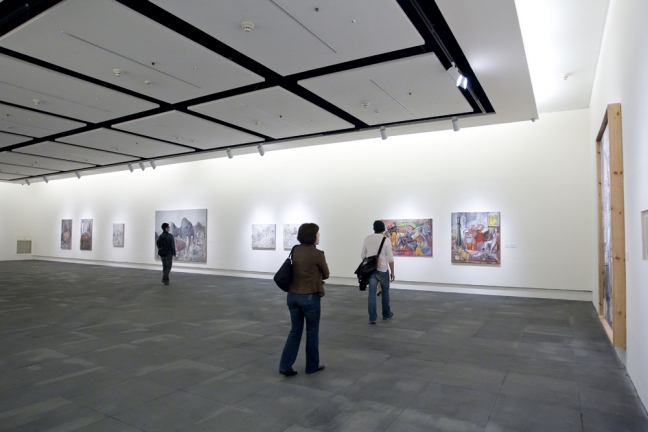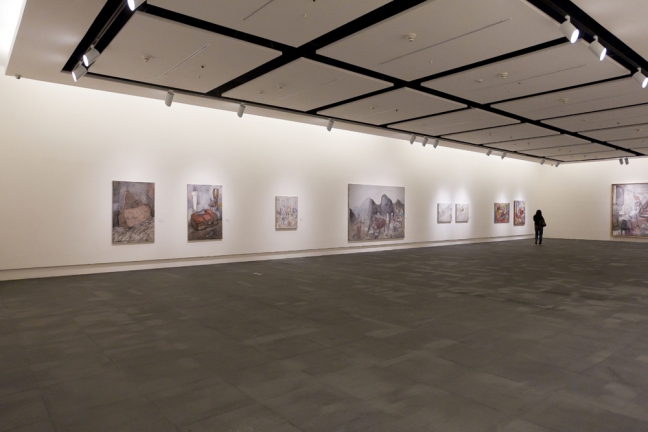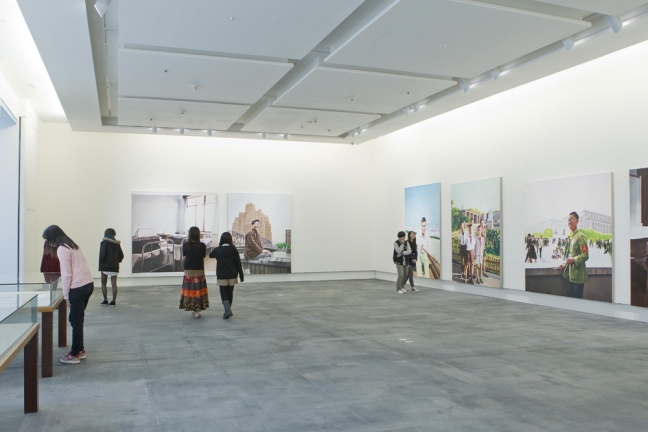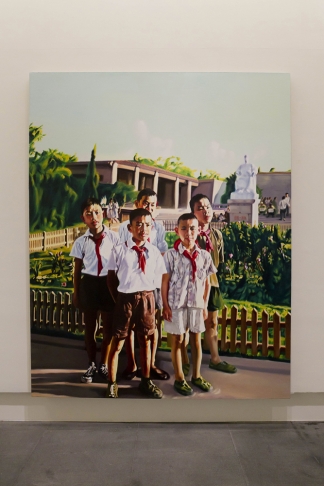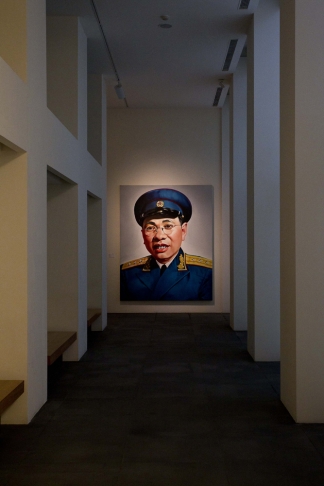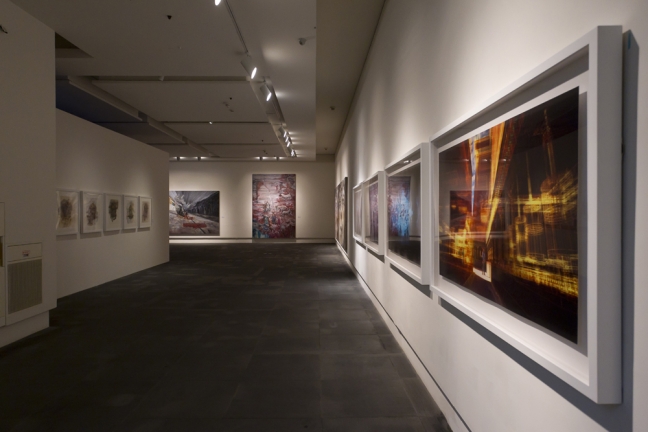Visual Rhetoric of a Generation: Three Solo Exhibitions by Hsiao-Lin Jen, Ke-Wen Jing, and Hsiao-Tao Chang
2012.03.02~2012.04.29
09:00 - 17:00
Visual Rhetoric of a Generation: Three Solo Exhibitions by Hsiao-Lin Jen, Ke-Wen Jing, and Hsiao-Tao Chang If one were to analyze the
generational gaps” amongst contemporary Chinese artists, they would find that those who were born in China during the 50s tend to focus on social realities or historic issues - their works are a conscious pursuit for a grand narrative. Artists born in the 60s are inclined to immerse in their individualized contexts, expressing memories of personal growth, subtle connections between themselves and history, and various changes in humanity. Through personal, internal strife, they express the many facets of their existence's connection to history and reality. And, apart from emphasizing personal character in their works, those born in the 70s seem to hold a fascination with the various conditions of modern urban life. They tend to find sensations of existence that stem from personal subtleties amongst the cracks of an urban setting. At this point, it should be clarified that, for the purpose of this essay, generations are categorized by the midpoints of an era. They are not fixed by an upper or lower boundary, such as the year, 1960 or 1970. This is due largely to the inability to scientifically prove that a person born in 1969 does not belong to the same generation of people born in 1970. There is no clear or definitive way to separate generations. Similarly, considering differences in personal styles, the study of art from across different generations includes the works of an era’s more representative artists. In no way does this suggest that all works of art from a particular era share common characteristics that define an era’s style. For example, Hsiao-Tao Chang was born in 1970, yet I believe his works belong to the 60s. If one were to categorize Hsiao-Lin Jen, Ke-Wen Jing, and Hsiao-Tao Chang as artists from the 60s, they would notice that their works express a sense of anxious pursuit through their manipulation of images and consciousness of real issues.
generational gaps” amongst contemporary Chinese artists, they would find that those who were born in China during the 50s tend to focus on social realities or historic issues - their works are a conscious pursuit for a grand narrative. Artists born in the 60s are inclined to immerse in their individualized contexts, expressing memories of personal growth, subtle connections between themselves and history, and various changes in humanity. Through personal, internal strife, they express the many facets of their existence's connection to history and reality. And, apart from emphasizing personal character in their works, those born in the 70s seem to hold a fascination with the various conditions of modern urban life. They tend to find sensations of existence that stem from personal subtleties amongst the cracks of an urban setting. At this point, it should be clarified that, for the purpose of this essay, generations are categorized by the midpoints of an era. They are not fixed by an upper or lower boundary, such as the year, 1960 or 1970. This is due largely to the inability to scientifically prove that a person born in 1969 does not belong to the same generation of people born in 1970. There is no clear or definitive way to separate generations. Similarly, considering differences in personal styles, the study of art from across different generations includes the works of an era’s more representative artists. In no way does this suggest that all works of art from a particular era share common characteristics that define an era’s style. For example, Hsiao-Tao Chang was born in 1970, yet I believe his works belong to the 60s. If one were to categorize Hsiao-Lin Jen, Ke-Wen Jing, and Hsiao-Tao Chang as artists from the 60s, they would notice that their works express a sense of anxious pursuit through their manipulation of images and consciousness of real issues.
Visual Rhetoric of a Generation: Three Solo Exhibitions by Hsiao-Lin Jen, Ke-Wen Jing, and Hsiao-Tao Chang If one were to analyze the
generational gaps” amongst contemporary Chinese artists, they would find that those who were born in China during the 50s tend to focus on social realities or historic issues - their works are a conscious pursuit for a grand narrative. Artists born in the 60s are inclined to immerse in their individualized contexts, expressing memories of personal growth, subtle connections between themselves and history, and various changes in humanity. Through personal, internal strife, they express the many facets of their existence's connection to history and reality. And, apart from emphasizing personal character in their works, those born in the 70s seem to hold a fascination with the various conditions of modern urban life. They tend to find sensations of existence that stem from personal subtleties amongst the cracks of an urban setting. At this point, it should be clarified that, for the purpose of this essay, generations are categorized by the midpoints of an era. They are not fixed by an upper or lower boundary, such as the year, 1960 or 1970. This is due largely to the inability to scientifically prove that a person born in 1969 does not belong to the same generation of people born in 1970. There is no clear or definitive way to separate generations. Similarly, considering differences in personal styles, the study of art from across different generations includes the works of an era’s more representative artists. In no way does this suggest that all works of art from a particular era share common characteristics that define an era’s style. For example, Hsiao-Tao Chang was born in 1970, yet I believe his works belong to the 60s. If one were to categorize Hsiao-Lin Jen, Ke-Wen Jing, and Hsiao-Tao Chang as artists from the 60s, they would notice that their works express a sense of anxious pursuit through their manipulation of images and consciousness of real issues.
generational gaps” amongst contemporary Chinese artists, they would find that those who were born in China during the 50s tend to focus on social realities or historic issues - their works are a conscious pursuit for a grand narrative. Artists born in the 60s are inclined to immerse in their individualized contexts, expressing memories of personal growth, subtle connections between themselves and history, and various changes in humanity. Through personal, internal strife, they express the many facets of their existence's connection to history and reality. And, apart from emphasizing personal character in their works, those born in the 70s seem to hold a fascination with the various conditions of modern urban life. They tend to find sensations of existence that stem from personal subtleties amongst the cracks of an urban setting. At this point, it should be clarified that, for the purpose of this essay, generations are categorized by the midpoints of an era. They are not fixed by an upper or lower boundary, such as the year, 1960 or 1970. This is due largely to the inability to scientifically prove that a person born in 1969 does not belong to the same generation of people born in 1970. There is no clear or definitive way to separate generations. Similarly, considering differences in personal styles, the study of art from across different generations includes the works of an era’s more representative artists. In no way does this suggest that all works of art from a particular era share common characteristics that define an era’s style. For example, Hsiao-Tao Chang was born in 1970, yet I believe his works belong to the 60s. If one were to categorize Hsiao-Lin Jen, Ke-Wen Jing, and Hsiao-Tao Chang as artists from the 60s, they would notice that their works express a sense of anxious pursuit through their manipulation of images and consciousness of real issues.
